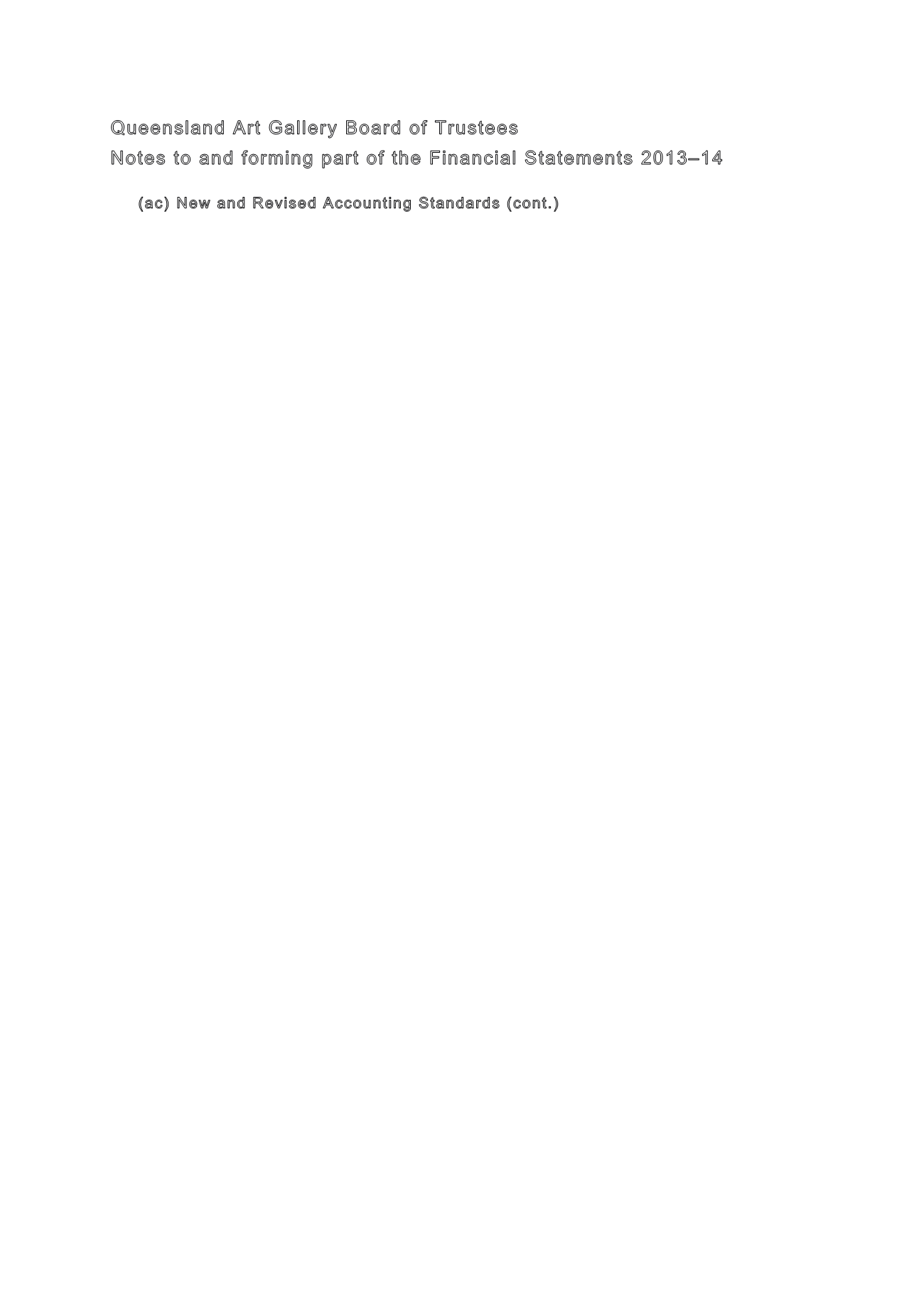

Queensland Art Gallery Board of Trustees Annual Report 2013–14
FINANCIAL STATEMENTS
PART B
18
18
Queensland Ar t Gallery Board of Trustees
Notes to and forming par t of the Financial Statements 2013–14
(ac) New and Revised Accounting Standards (cont.)
AASB 11 deals with the concept of joint control and sets out new principles for
determining the type of joint arrangement that exists, which in turn dictates the
accounting treatment. The new categories of joint arrangements under AASB 11 are
more aligned to the actual rights and obligations of the parties to the arrangement. The
Gallery has assessed its arrangements with other entities to determine whether a joint
arrangement exists in terms of AASB 11. Based on present arrangements, no joint
arrangements exist. However, if a joint arrangement does arise in future, the Gallery will
need to follow the relevant accounting treatment specified in either AASB 11 or AASB
128, depending on the nature of the joint arrangement.
AASB 9
Financial Instruments
(December 2010) and AASB 2010-7
Amendments to
Australian Accounting Standards arising from AASB 9 (December 2010) [AASB 1, 3, 4, 5, 7,
101, 102, 108, 112, 118, 120, 121, 127, 128, 131, 132, 136, 137, 139, 1023 & 1038 and
Interpretations 2, 5, 10, 12, 19 & 127]
become effective from reporting periods beginning on
or after 1 January 2017. The main impacts of these standards on the Gallery are that they
will change the requirements for the classification, measurement and disclosures associated
with the Gallery's financial assets. Under the new requirements, financial assets will be more
simply classified according to whether they are measured at amortised cost or fair value.
Pursuant to AASB 9, financial assets can only be measured at amortised cost if two
conditions are met. One of these conditions is that the asset must be held within a business
model whose objective is to hold assets in order to collect contractual cash flows. The other
condition is that the contractual terms of the asset give rise on specified dates to cash flows
that are solely payments of principal and interest on the principal amount outstanding.
The Gallery has commenced reviewing the measurement of its financial assets against the
new AASB 9 classification and measurement requirements. However, as the classification of
financial assets at the date of initial application of AASB 9 will depend on the facts and
circumstances existing at that date, the Gallery’s conclusions will not be confirmed until
closer to that time. At this stage, and assuming no change occurs in the types of transactions
the Gallery enters into, it is likely that the Gallery’s fixed-term investments with financial
institutions would be measured at amortised cost. Consequently, the classifications would
remain as per Notes 1(s) and 28. In the case of the Gallery’s current receivables, as they are
short term in nature, the carrying amount is expected to be a reasonable approximation of
fair value.
All other Australian accounting standards and interpretations with future commencement
dates are either not applicable to the Gallery or have no material impact on the Gallery.
















